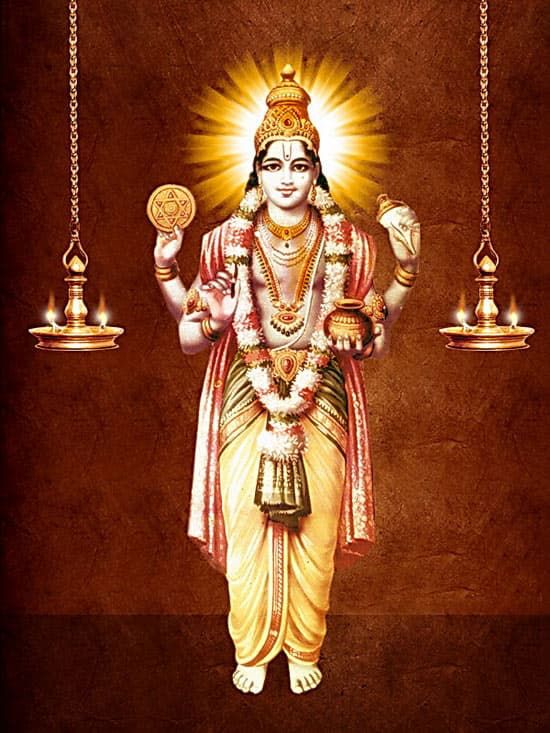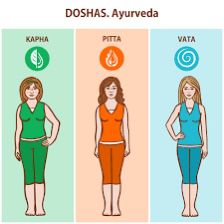Diplom Ayurveda Massage

Lecturer

Patricia M. Lopes (Physiotherapist and Osteopath)
Patricia M.Lopes ( Physiotherapist and Osteopath )
- Workload: 300 hours (150 hours of Academic Medicine and 150 hours of Ayurvedic Massage Techniques)
- Language: Portuguese, English, German and Italian
- Certificate: Yes
- Location: Lerzenstrasse 27, 8953 Dietikon
- Theoretical and Practical Class
Course Description
WHAT IS AYURVEDA
Ayurveda is an ancient science that has its foundations in the sacred writings of Hinduism and operates through a holistic conception of man.
It is configured as a medical and philosophical system in which illness and health represent processes in which the body, mind and spirit participate, and in which therapies such as massages, purification techniques, a balanced diet, lifestyle recommendations and meditation help to restore the balance compromised by illness.
Based on ethical principles such as non-violence and respect for nature, it focuses on the physical and therapeutic aspects, complementing the philosophy and practice of yoga in its spiritual aspects.
Finally, Ayurveda reminds people that the main goal in life is true freedom from dependence on the outside world.
The metaphysical vision of the body and the methodology for maintaining psychophysical health are materialized in a practical and detailed study of the human being through the development of a complete system of medicine, including branches such as internal medicine (kayacikitsa), surgery (shalyatantra ), ophthalmothorhinolaryngology (shalakyatantra), toxicology (agadatantra), gynecology and pediatrics (kaumara bhritya), the science of rejuvenation (rasayana), the use of aphrodisiacs (vajikarana), psychology (bhutavidya), whose techniques were taken as an example and are still used today in modern medicine.
Ayurveda was born in India, the cradle of Vedic civilization, around 2,000 years ago. The word Ayurveda means Science of Life and, in fact, contrary to what you might think, it is exactly that: Ayurvedic texts don't just deal with medicine, but also with philosophy, spirituality, cooking, constellations and all aspects of human life.
In the first module you will find
Definition and purpose of Ayurveda
Hippocrates, father of Mediterranean medicine
Philosophy and fundamental principles
Panchamahabuta: five elements and their qualities
Tridosha
You will learn the meaning of the five elements of man and nature. The proportion of the elements gives life to specific human constitutions, which will present themselves in their strengths and weaknesses.
In the second module you will find
Prakriti, individual nature
Relationship between elements
Vata typology, main characteristics
Pitta typology, main characteristics
Pitta typology, main characteristics
Kapha typology, main characteristics
You will acquire the skills and competencies to rebalance your constitution through food cues, movement, emotions, recovery and substance residues.
Finally, these tests will be proposed as an exemplary rebalancing model.
In the third module you will find
Re-education tips for every constitution
Daily lifestyle regimen
Nutrition in Ayurveda
Case studies

Today it is implemented as one of the "unconventional" methodologies for maintaining health, placing great emphasis on its preventive capabilities through purification techniques and the elimination of toxins (panchakarma), daily and seasonal routine indications, the use of herbal preparations made according to traditional methods Ayurvedic recipes, through the practice of Ayurvedic massage, performed on the whole body with herbal oils, and other body treatment techniques with oils, herbs and powders.
Constitutional Types or Prakriti

Ayurveda considers each individual's psycho-physical constitution.
He claims that everything is useful in nature, but knows that some foods, herbs and substances may be useful for some, but should be limited or avoided for others.
In order to establish what is most useful and which treatments are most suitable, it is necessary to determine the individual constitution.
According to Ayurveda, there are seven (or ten when considering 6 mixed) constitutions:
Constitutions too
1. vata
2. pitta
3. Kapha
mixed constitutions
4.vata - pitta
5. pitta - kapha
6. vata - kapha
tridosic constitution
7. vata - pitta - kapha
Although each individual constitution is dominated by one or more doshas, each individual is actually a combination of all three doshas present in different proportions.
"Propulsion, transportation, filling, separation and support are the five characteristic functions of vata which, fivefold, sustain the body." (SU. Sut. 15,3.1
